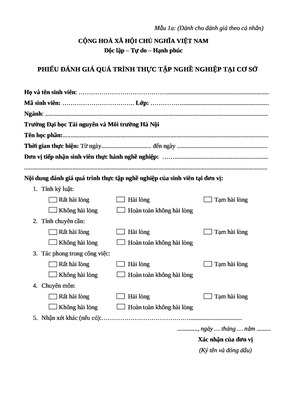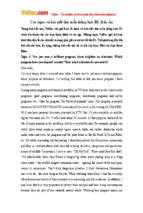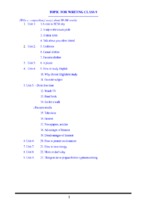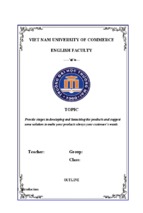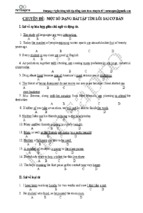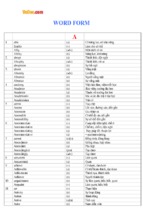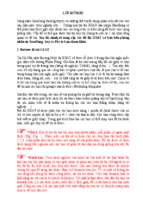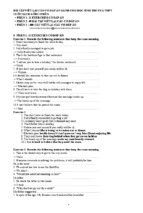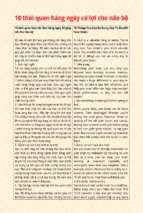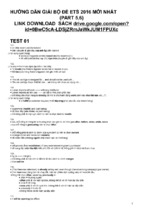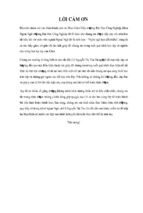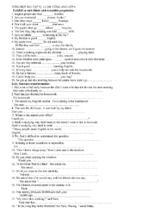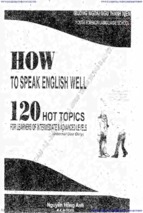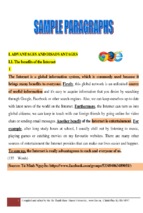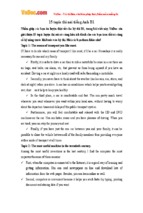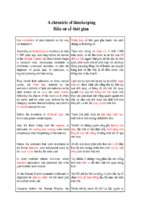The Good Writing Guide
INTRODUCTION
Good writing is important. The ability to write clear and accurate text is the
most useful skill that you will learn at university. Whatever subject you
specialise in, and whatever career you choose after you graduate, a command of
language is a valuable asset. When employers offer a job to an MA graduate
they are sometimes interested in how much he or she knows about Charles
Dickens or the Napoleonic wars, but they are always looking for someone with
good communication skills and an eye for detail. In almost any job, you will
spend time working with a range of texts. You may produce written reports,
letters or marketing copy. You may also give lectures or presentations. If you
are aiming for a career in which you can use language stylishly, such as
journalism or creative writing, it is equally important that you know the rules of
good plain English.
This booklet will help you to think about how you write. It will also
improve your reading skills. While you are a student you will often be a reader,
absorbing information from other sources or analysing the structure of a text.
When assessments come along, you will be a writer, and someone else will read
and analyse your work. Reading and writing are closely connected. Improving
your skills in one area will have a knock-on effect in the other. Set yourself high
standards in both these areas. One of the simplest ways to improve your own
writing is to read widely and to look at how authors mould the language to their
own purposes. Try to develop an eye for style and sentence structure as you read.
This will help you to assess your own writing and expand your language skills.
While you are at university, ‘good writing’ means being able to produce a
clear, grammatical, logical argument to answer a question in an exercise, an
essay or an exam. This is not the place to be innovative or poetic. Chances to be
creative with language are available elsewhere. Academic writing should be
clear, clean and correct. It should display your knowledge and express your
ideas. Good writing is always aimed at a particular audience. Your audience is
the tutor (or tutors) who will mark your work. Your tutors will be highly
qualified, and are likely to be the kind of people who have an obsessive interest
in grammar and spelling. They will consider a command of language as
important as any ideas you might want to share. In the School of Language and
Literature, tutors are allowed to deduct up to four marks for poor spelling,
punctuation and presentation. That is the difference between a first-class mark
1
and a 14. If your grammar is so poor that it obscures your argument, you may
fail the assessment. Markers cannot give credit for what they think you might
have wanted to say. What is on the paper is all that counts. Good writing is not
an optional extra to a degree; it is the core of the education system. Make this
your primary goal at university. Everything that you study can be channelled
towards making yourself a more perceptive reader and a more accurate writer.
Get this right and you will understand more of what you read. You will also be
able to express your own ideas with force and clarity.
This booklet is divided into three sections. Section A contains advice on reading
a text for analysis, and on setting up your answer to a question. It looks at
planning, structure and paragraphing, and it explains some technical terms.
Section B deals with language. It highlights some common problems, and it
offers advice on how to sharpen up your prose. Section C deals with using
sources. It explains referencing and how to use critical material. If you are
studying more than one discipline you may find that there are slightly different
expectations about referencing between departments. The advice given here is
based on the MHRA Style Book. This is the referencing system we expect you
to learn. It should also be appropriate for most other arts subjects. In each
section you will find a Quick-Fix page with a summary of the most important
points presented at a glance. Use these as checklists every time you submit a
piece of written work. Each section also has some recommended further reading.
At the back of the booklet there is an index so that you can find things in a hurry.
Many of the points have been numbered so that your marker can point you to the
relevant section when things go wrong.
If, after all that, you would like some more advice about good writing
there are several things you can do:
— Consult your tutor. This is one of the reasons that tutors have office hours,
and it is remarkable how few students take advantage of this opportunity for
some individual advice. Remember to reread your tutor’s comments on your
previous essay before you write the next one. You will find this very helpful.
— Make an appointment to see the School’s Writing Support tutor. If you have
been referred for Writing Support by your tutor this is particularly important.
Consultation is on a one-to-one basis and is designed to help. Contact the School
Office for details.
�— Contact the Academic Learning and Study Unit (ALSU), Regent Building,
Tel: 272448, or visit www.abdn.ac.uk/alsu to find some helpful advice online.
ALSU runs workshops and courses on study skills and can also offer individual
consultations.
2
— Use your own network. Ask a friend or flatmate to proofread your work
before you hand it in. So long as they do not change the content or borrow your
ideas this is not cheating. Choose someone you can really trust. A friend on a
different course is ideal. You can return the favour and improve your own
proofreading skills. This is excellent practice for a career in marketing,
publishing or journalism. Develop an interest in writing, and discuss with your
friends what works and what does not. This is one of the best ways to learn.
This is The Good Writing Guide. I hope it is useful.
Dr Hazel Hutchison, 2005
3
CONTENTS
Section A: Planning
1. Reading for writing
2. Reading the question
Question busting
3. Structure:
Making a plan
Introductions and conclusions
Subheadings
Paragraphs
4. Layout
5. Submission
Further Reading
Quick Fix: Planning
Section B: Language
6. Register
7. Punctuation:
Apostrophes
Commas
Semi-colons
Colons
Dashes
Quotation marks
Exclamation marks
8. Grammar:
Clauses
Agreement
Tenses
Pronouns
9. Spelling:
Common errors
Capitals
US v UK spelling
Further Reading
Quick Fix: Language
Section C: Sources
10. Choosing sources
11. Using sources
12. Layout of quotations
13. Referencing:
14. Bibliography
15. Plagiarism
Further Reading
Quick-Fix: Sources
4
SECTION A: PLANNING
1. READING FOR WRITING
Everyone has their own way of approaching a text. Some people like to take
meticulous notes as they go along. Others prefer to read through swiftly and then
return to look at the text in depth. Develop your own style of reading. However,
here are a few things to remember.
Keep an open mind about the text. One of the most valuable things you can
learn as you study literature is the ability to suspend your own prejudices and
preconceptions as you read. Learning to see things from different perspectives is
a vital part of the reading process. Do not attempt to make a text fit your own
agenda as you go along, or dismiss it because it challenges what you believe.
You do not have to agree with the text, but give it a chance to speak for itself. If
you react strongly to something, try to work out why.
Think about language. It is easy to be carried away by an intriguing plot or an
interesting set of characters. But keep one eye open for the language the author
uses. This is especially important in poetry, where the words work harder.
Develop an eye for style. What makes Austen different from Hemingway, or
Tennyson different from Plath? What kind of words do they choose? Do they
use a lot of adjectives or a lot of verbs? Is their language formal or colloquial? Is
their language abstract and philosophical or concrete and particular? Does it fit
the historical context of the text, or challenge this? These simple questions give
you an insight into the author’s underlying concerns and preoccupations.
Language does more than tell a story. It creates a world of ideas. What makes a
degree in English really worth having is an understanding of how this process
operates. Do not just look at what the text says. Try to work out how it conveys
ideas and elicits certain responses.
Think about structure. This will depend on what kind of text you are reading.
The rules of form for fiction, poetry and drama are constantly evolving.
However, it helps to have some idea of conventions and techniques, so that you
can see when something interesting or unusual is happening. Compare the text
to what you already know about sonnets, or Jacobean plays or Victorian novels,
or whatever you happen to be reading. Ask yourself how the text is put together
and whether it seems to be following a convention or defying it. If something
jars, or seems out of place, there may be a good reason for this. Explore it.
Read between the lines. Be careful about this, because you could end up
supplying a whole heap of ideas that the text does not support. However, authors
5
often manipulate the unspoken and the unseen as carefully as the things they tell.
Pay special attention when characters refuse to answer questions or disappear
for a few chapters or scenes. Who is off stage when something interesting
happens? Is the narrator holding back information that the reader wants? Is there
another way of viewing the events in the story?
Take notes. This is obvious, but vital. If you see something interesting or have a
good idea, write it down and note the page number. You will save hours trying
to find it again later.
2. READING THE QUESTION
The easiest way to fail an assessment is not to answer the question. Make sure
you understand what the question is looking for. Be especially careful if the
question includes literary terms such as ‘form’ or ‘genre’ or ‘realism’. These
sometimes mean slightly different things to different people or in different
contexts. If you are unclear about this you can discuss it with your tutor and
clarify exactly what they want. Alternatively you can look the terms up in
something like M. H. Abrams, A Glossary of Literary Terms. Make it clear in
your essay exactly how you are using the term, and back this up with an outside
source if possible.
Think about the kind of course to which the assessment belongs.
Tutors are usually looking for a response to, or an application of, ideas covered
in the course. Think back to what has been done in lectures and seminars. Was
the course more focused on historical context or technical analysis? Did it
encourage use of theoretical ideas or knowledge of the author’s experience and
concerns? Look in the course guide to remind yourself about the main themes
and objectives of the course. Choose a question that will allow you to show off
what you have learned. In an exam you will not have time to go and look these
things up, so spend half an hour thinking about this as you revise for the exam.
It is often worth considering more than one question while you are doing
some background reading for an essay. You can then choose the one that you
find most interesting or stimulating as you go along. This way you avoid
heading up a blind alley and then having to start all over again. Keep your
question in mind as you write. Everything you say should be connected to it.
Avoid rambling. You will not get credit for including irrelevant information,
however interesting you may think it is. Answer the question.
6
Question busting
Like any academic subject, the study of literature has its own technical language,
which you need to learn. However, this vocabulary includes some everyday
terms which are often used to particular purposes in essay questions. Make sure
you understand exactly what they mean before you start. Here are a few to look
out for.
Form: This is a very wide-ranging term. Usually it either means the kind of text
you are dealing with, (sonnet, dramatic monologue, novel, short story, comic
drama etc) or the internal structure of the text (a play in three acts, a first-person
narrative, an Italian sonnet of eight lines followed by six all in iambic
pentameter). Sometimes it means the thematic movement of a text (three
sections focusing on love, grief, regret). If you are uncertain what is required,
ask your tutor.
Critical analysis aka practical criticism: A tightly focused breakdown of a set
passage, looking at language, stylistic technique and form (see above). Use
fewer secondary sources for this, but make sure you know and understand some
technical terms before you start. This is the hardest kind of essay to do well. A
good one is a thing of great beauty and will be rewarded accordingly.
Comparative essay: If you write on more than one text, do not just talk about
one and then the other. Draw connections and comparisons between them. A
good way to make this happen is to structure your essay around several things
they have in common and to keep both texts in play as you go.
Theory/theoretical issues: This does not invite you to form a theory about a
text. It almost certainly means literary critical theory (ie. something about
theories of reading and writing by Barthes, Derrida, Cixous, Butler etc). If you
do not know who these people are or what I am talking about, do not attempt the
question. However, if you do, and if it is relevant, some theory will give an
essay weight and bite. Theoretical texts invite you to develop different ways of
reading, which can make for radical and exciting work.
Voice: This usually refers to who is speaking in the text and to the language
they adopt. It is often used in questions about poetry. It invites a discussion of
the poem’s speaker. Consider what sort of situation the poem implies as a setting
or background to the poem as well as the personality and emotional state of the
speaker. In fiction this is usually called narrative voice. In both cases you
should consider whether the speaking voice is inside the fictional world or a
detached observer looking on. Beware of equating the narrator with the author.
An author assumes different voices when writing, although these are often
7
mixed up with elements of their own personality. It is hard to untangle this
neatly, so it is safer to discuss the ‘speaker’ or the ‘narrator’.
Point of View aka perspective: This refers to the standpoint of the narrator of a
story or the speaker of a poem. The question here is who is seeing the story?
Does the narrator see everything and tell all? Are they omniscient? Or do they
view events through the eyes of one of the characters at a time and give a
limited perspective? A good yardstick for this is how much you are told about
the characters’ internal thoughts and feelings. ‘Point of view’ does not refer to
the personality or political opinions of the narrator or the characters — although
this is often connected. Sometimes ‘point of view’ is called focalisation as the
reader’s view is focused through one character. Pay special attention when this
shifts between characters.
Irony: This is much more than sarcasm. Irony derives from the Greek word for
‘dissembler’. Dramatic irony involves one or more characters being excluded
from knowledge which another character shares with the audience. In Hamlet,
for example, the audience knows Ophelia is dead before Hamlet does. Generally
in literature ‘irony’ implies some kind of hidden knowledge or concealed intent.
It is not always comic, but it can also be used for comic effect. Sometimes the
narrator adopts an ironic tone, inviting the reader to question what the text
appears to be saying. The opening line of Jane Austen’s Pride and Prejudice is
an excellent example of this:
It is a truth universally acknowledged, that a single man in possession of a
good fortune, must be in want of a wife.1
It is really? Or is the narrator making fun of people who think this?
Gender: This usually refers to social expectations about how men and women
should behave, rather than whether a person is biologically male or female.
Tragedy/tragic: This is not just looking at sad events and the emotions they
elicit. ‘Tragic’ invites some sort of comparison with the conventions of dramatic
tragedy. Think about Sophocles, Shakespeare and Marlowe, rather than what
you might read in The Evening Express.
1
Jane Austen, Pride and Prejudice (1813; repr. London: Penguin, 1996),
p.5.
8
3. STRUCTURE
Markers often complain about poorly structured essays, but by then it is too late
to do anything about it. Bad structure in an essay is usually the result of a failure
to read the question carefully, a lack of understanding of the subject, or a rushed
job. Taking time to plan out your work helps in many ways. It ensures that you
connect your essay with the question. It reduces the stress of writing, as you
know where you are going next. It produces a well-rounded piece of writing.
3.1 Making a plan
However you like to take notes and marshal your ideas, at some point you are
going to need a linear plan for your essay. It is always worth doing this,
especially in exams when time is tight and nerves are likely to make you forget a
good idea which seemed very clear fifteen minutes ago. The classic layout for an
essay is an introduction, followed by three sections, followed by a conclusion.
This is based on the rules of Classical rhetoric, in which the speaker offered an
introduction, a statement, a counterstatement, a resolution between the two and a
conclusion. There is not a set rule about this, but this tried and tested system
works well and usually produces a satisfying read. In literature essays, this plan
often evolves into an introduction, three sections dealing with relevant themes
and a final section tying these together. But, remember that you are not just
making lists of what you know. You are answering a question and the whole
thing should form a logical argument.
A plan should operate as a skeleton for your essay. Ideally it should be
possible for a reader to reconstruct your plan from the finished article. This is
basically what you are doing when you take lecture notes. Paying attention to
how this process works will make planning your own written work a lot easier.
Most lecturers think carefully about how they want to present material to the
class. It might seem random, but if you listen they will give you markers about
what the main headings are, and when they are filling out these sections. Look
over your lecture notes and think about some of the techniques lecturers use. Try
to see the shape of the lecture. Is the lecturer moving outward from the text to
the wider historical context? Or perhaps they are focusing in, beginning with
background information, looking at a particular political problem or cultural
issue, and then exploring how one text contributes to this debate. Alternatively,
are they working through the text section by section? Or are they offering a
spectrum of views on the text? These are all approaches you can use in
structuring your written work. A clear plan makes it easier to fulfil your
intentions.
9
Look at the contents page of this booklet. That is a tidy version of the plan
I am using as I write. Ideally you want something that looks a bit like that, but
shorter. You should also have a good idea of what goes in each section. I have
chosen a plan that moves from general principles that you should think about
before you start, through useful tools that you need as you go along, to some
details that apply specifically to English and which will give your work polish.
Sometimes you will have information that could belong in more than one section.
For example, you will find information about choosing secondary sources in
Section C, although it would also have been useful here. Use your judgement
about where things go and what belongs together. Try to give your essay
direction, and keep thinking about the question.
3.2 Introductions and conclusions
Have one of each in every piece of work. Avoid repeating the question in the
introduction, but do offer an outline of the areas you will discuss. If you have a
particularly juicy quote or a fascinating fact, this may be a good place to show it
off. Do not make wild generalisations about the ‘Victorians’, ‘most readers’, ‘all
poets’, ‘middle-class people’, ‘critics’ etc. However if you have found a
particularly outrageous generalisation in something you have read, do feel free
to start by quoting this and then contradict it. Read some academic journal
articles and see how other writers kick off. This is usually the hardest bit of an
essay to get right.
Imagine you are answering this question: Explore the connection
between marriage and money in Jane Austen’s Pride and Prejudice. A weak
introduction would be something like this:
Marriage and money are important themes in Pride and Prejudice. This
essay explores the connection between marriage and money in Jane
Austen’s novel. First I will look at the theme of marriage, followed by the
theme of money. Then I will look at the connection between the two.
From this we will be able to see what Austen is trying to say about the
link between them.
There is nothing really wrong with this, but it does not open up the question in
an interesting way or provide anything to grab the reader’s attention. A good
introduction offers a sense of where the essay will go. Something like this is
better:
The connection between marriage and money lies at the heart of Pride
and Prejudice. From the opening sentence to Elizabeth and Darcy’s
engagement, this novel highlights the desirability of financial security in
10
marriage. However, this novel also shows the dangers of marrying purely
for gain. This essay will explore the different models of marriage which
Austen presents in Pride and Prejudice: marrying for money without love,
marrying for love without money, and marrying with both. These models
allow Austen to examine the place of the marriageable woman within the
society of her period.
This demonstrates a knowledge of the text and some intelligent thought on the
question. It also maps out the plan of the essay that is going to follow. If you can
do this in advance then your way ahead will be much clearer. However, it is
always worth going back to look at your introduction once you have finished the
essay. Does it promise something that is not in the essay? Or could you flag up
an interesting idea in a more stylish way? Do not be afraid to rewrite the
introduction if necessary. Think of this as the shop-window for your work. Show
what you have in store in a way that will encourage a closer look.
Conclusions are also hard to handle gracefully, but it is better to try than
to ignore the problem. Return to the issues which were raised by the question
and show how what you have said proves your point. Avoid introducing any
new ideas or material here. Do not save up your main idea as a punch-line.
Similarly avoid repeating what you said earlier, although you can, of course,
refer back. As with the introduction, a short, well-chosen quote can help.
Although it looks good if you explore a range of arguments during the essay
itself, a conclusion should always conclude. Push your thinking towards some
sort of resolution. Do not just sit on the fence. Answer the question one way or
the other.
3.3 Subheadings
These can be useful in honours dissertations. In essays, however, it is better to
create a flow of connected ideas without stopping and starting. In a dissertation,
subheadings will show your marker where you are going. They also allow you to
see whether one section of your dissertation has outgrown the others. If this is a
problem, you might want to consider revising your plan to accommodate your
material. However, a few subheadings go a long way. Only mark major sections.
3.4 Paragraphs
Ideally the structure of your essay should be obvious from your paragraphs.
Each paragraph should be a step forward in your argument. Think of each
paragraph as a mini essay in which you introduce a new idea, present some
evidence to back it up, and draw a conclusion from it. Once you have done this,
start a new one.
11
Within a section you can link paragraphs together by connective words
and phrases, such as ‘however’, ‘consequently’, ‘moreover’. But make sure that
these words really justify their presence. There is no use saying, ‘it follows that,’
if it is not obvious how one idea leads to the other. Similarly, avoid pompous
declarations such as ‘it is the case that’ and ‘it is a useful observation to note
that’ etc. Avoid starting paragraphs with vague pronouns such as ‘it’ and ‘this’.
If you cannot use a real noun, you might want to stop and ask yourself exactly
what you are talking about. If you want to pick up an idea from the last
paragraph and explore it further, make sure that you name this idea, so that the
reader can see what you are doing. Be specific. Use nouns and verbs.
Markers are suspicious of paragraphs consisting of less than three
sentences or rambling on for more than a page and a half. Read through your
essay once you are finished. If you find any paragraphs that are too long or too
short, consider revising where the breaks fall. Do not use novels or newspapers
as models for paragraphing. Novelists and journalists are aiming for very
different effects. Journalists rarely have more than one sentence in a paragraph,
and often do not write complete sentences. They are playing a different game
altogether. Here again, journal articles or critical books will offer good examples,
so pay attention to this as you do your research.
Indent the start of every paragraph by hitting the tab key to the left of Q
on the keyboard. This makes it very obvious where your paragraph starts. Do
not indent your first paragraph or a new paragraph after a subheading. Do not
indent after a quotation, unless you are starting a new paragraph. For more
advice on layout of quotes see pages 43-46.
4. LAYOUT
You can lose the goodwill of your marker before they even start by presenting
an essay that is hard to read. There are several things that you can do to make
your essay look good. These will not get you extra marks, but they might stop
you losing some. They will also put your marker in a better frame of mind.
Put the question at the top. It might be obvious to you which question you are
answering, but believe me, it is not always clear to the marker. Having the
question on your essay also helps you keep the question in mind as you write.
But do not spend hours designing an elaborate title page. Put that time and effort
into your written work. In exams there is no need to rewrite the question, but
mark the number clearly both on your answer and on the front of the paper.
Double-space the text. The reason for this is so that the marker has space to
correct your work in between the lines. It is for your benefit, even if it does not
feel like it.
12
Leave a wide margin. This leaves room for comments and corrections. These
will be useful. Make sure you read them.
Use a sensible font. Times New Roman or Arial are best as these are easy to
read and familiar to the eye. Use 12-point text. Anything smaller is hard to read.
Anything bigger suggests that you might be trying to cover up for a short piece
of work. Do not put quotations in italics, unless that is how they appear in the
text you are quoting. Only use italics for titles of books and plays or words in a
foreign language.
Give clear references. It is easy when you know how. See pages 46-51.
Give a bibliography. Even if you only have one or two texts to list, please do so.
It looks professional and it is a good habit to form. See page 51 for how to do it.
Include a word count. Writing to length is a useful skill which you will need
later on. Learn to tailor your work to the requested word length. You will not be
penalised for an essay that is within 10% of the stated word count, either over or
under. However, you will be penalised for lying about it. When marking essays
for a whole class, it is usually easy for the marker to tell when something is too
long or too short, so be honest here or face the consequences.
13
5. SUBMITTING YOUR WORK
Make sure you know the submission dates and regulations for your course. You
can get this information from your course guide or the English website. Work
submitted up to a week late will be penalised by three marks, unless you have a
medical certificate. If you need an extension of more than one week for medical
reasons, or because you have a serious personal problem, you must ask the
course convener (for levels 1 and 2) or the Head of School (for levels 3 and 4).
Try to let your tutor know about a problem as quickly as possible.
Your course guide will also have information about marking criteria and
how to interpret the Common Assessment Scale. It is worth understanding how
the marking system works, so have a look at this. Also look at the cover sheet
which you should attach to your essay before handing it in at the office. This
cover sheet gives you a good idea of what your marker wants to see in your
essay.
Return of written work usually takes two to three weeks. Most courses
operate a system of essay moderation. This means that once your tutor has
marked your work they pass it on to another member of staff who looks at a
random sample and any borderline cases. This means the system is fair, but can
take a bit of time, especially in the middle of term when we have other things to
do. Please be patient, and try not to pester your tutor for your work. This will
only slow them down.
Further Reading
Abrams, M. H., A Glossary of Literary Terms (1941; repr. London: Wadsworth,
1996)
Clancy, John and Brigit Ballard, How to Write Essays: A Practical Guide for
Students (Harlow: Longman, 1998)
Greetham, Bryan, How to Write Better Essays (London: Palgrave, 1999)
Hennesey, Brendan, Writing an Essay (Oxford: How to Books, 2002)
Peck, John and Martin Coyle, Literary Terms and Criticism (Houndmills:
Palgrave, 2002)
— Practical Criticism: How to Write a Critical Appreciation (Houndmills:
Palgrave, 1985)
14
QUICK FIX: PLANNING
1. Read the text carefully, but do not focus so closely on your chosen question
that you miss out on everything else. Take notes as you go along. It saves
time later.
2. Make sure you understand the question. If you are unclear about anything,
look it up or ask your tutor. It is better to look a bit silly at this stage than after
the event.
3. Think about the question, and try to work out why your marker has set it. How
does it connect with issues and ideas explored in lectures and tutorials? Work
out which issues you are going to concentrate on.
4. Make a plan. Remember that your essay is an argument that should persuade
the reader. Try to give it direction and purpose. Focus
everything towards
answering the question you have chosen. Work out at this stage which
material you will use in each section.
5. Avoid using the plot of the text as the structure for your essay. Demonstrate
that you can step back and view the text as a series of connected ideas or
strategies. Do not simply follow the events and comment on them as they
unfold.
6. If you are writing a comparative essay on more than one text, make sure you
integrate the texts fully. Do not simply talk about them one after the other.
Create a plan that allows you to bounce ideas between the texts and build up a
bigger picture.
SECTION B: LANGUAGE
7. Use your introduction to outline where you are going in the essay. Avoid
simply restating the question. Try to be interesting.
8. Use paragraphs to distinguish between separate ideas and to move your
argument forward.
9. Use your conclusion to point out how the evidence you have given answers
the question. Make sure you answer the question. Do not sit on the fence.
10. Lay out your essay neatly and with enough room for comments and
corrections.
15
SECTION B: LANGUAGE
6. REGISTER
Writing well involves presenting your material in a tone appropriate to your
audience and to the task in hand. You would use different styles of language for
a business letter, a newspaper report, a text to a friend or a short story. It is
important to develop a suitable tone, or register, for your written work. A
university essay is a formal document and requires a formal register. Students
often struggle to find a balance between formal, intellectual language and open,
accessible English. Many reputable scholars struggle with this too, which is why
some academic books are so hard to understand. However, even the most
complicated ideas can be articulated clearly. Your marker will be delighted to
see complex thought presented in plain English. They will also notice if you
dress up weak thinking in flowery language. Pay attention to the register of your
writing and remember who will read your work.
Read critics: You need to do this anyway for your own research. As you read
secondary sources look at the way in which critics use language. If it seems too
dense and formal then do not copy their style. However, if you find a book that
is lucid, interesting and readable, try to work out what makes it so clear.
Avoid being too personal: Your name appears on the front of your essay,
therefore your marker already knows that everything in the essay is your opinion.
Do not keep saying ‘in my opinion’ or ‘it seems to me that’ etc. Have the
courage of your convictions and state what you think. If you can back up your
views with evidence from the text or secondary sources, there is no need to
apologise or hesitate. Some markers dislike the use of ‘I’ anywhere in the essay.
Others are more relaxed about this. It is probably best to avoid it if possible.
Present your work as a piece of cohesive thought rather than as collection of
your own responses. ‘This essay will focus on’ sounds better than ‘I want to
look at’. We are trying to train you to be objective and analytical, so
demonstrate that you are developing these skills.
Avoid being too clever: Some of the worst grammatical errors are caused by
students trying to write long, complex sentences. Always use the shortest
possible sentence for what you want to say. Similarly, do not use words that you
think you understand. If in doubt, look them up or leave them out.
Avoid slang: This does not just cover words and phrases. It also applies to
informal expressions and sentence constructions. Do not say, ‘This poem really
hits you between the eyes when you read it. You know what I mean?’ You can
express the same idea by saying, ‘This is a poem of enormous emotional power,’
16
or, ‘This poem demands a strong response from the reader.’ Avoid using ‘you’
or ‘us’ for the reader of the text. ‘One’ sounds formal in everyday speech, but it
is very useful in this setting.
Tenses: Use present tense for anything that happens in the story, novel, play or
poem. Use past tense for historical events or events in the life of the writer. This
helps to keep the two worlds separate: ‘Henry James was an American writer
who lived and wrote in Europe. In The Portrait of a Lady he explores the social
tensions which surround Isabel Archer as she moves between these two
continents.’
7. PUNCTUATION
Punctuation matters. It does not simply tell the reader when to start and stop. It
organises the text into meaningful units. Getting it wrong can seriously damage
the sense of the text. To see the power of punctuation, look at this example from
Lynne Truss’s book, Eats, Shoots and Leaves:
Dear Jack,
I want a man who knows what love is all about. You are generous, kind,
thoughtful. People who are not like you admit to being useless and inferior. You
have ruined me for other men. I yearn for you. I have no feeling whatsoever
when we’re apart. I can be forever happy — will you let me be yours?
Jill
Dear Jack.
I want a man who knows what love is. All about you are generous, kind,
thoughtful people, who are not like you. Admit to being useless and inferior.
You have ruined me. For other men I yearn! For you I have no feelings
whatsoever. When we’re apart I can be forever happy. Will you let me be?
Yours, Jill 2
It makes you think, doesn’t it?
2
Lynne Truss, Eats, Shoots and Leaves: The Zero-Tolerance Approach
to Punctuation (London: Profile Books, 2003), p.9.
17
7.1 Apostrophes
This is the most common problem in written English. One can see apostrophes
in the wrong places in shops, theatre programmes, adverts, newspapers,
restaurant menus and more. There is always some public debate going on about
whether we should retain apostrophes in the language or abolish them because
so few people seem capable of using them properly. But the fact is that they still
exist, and we still expect you to be able to put them in the right places. Before
writing this guide, I asked my colleagues what they thought was the biggest
problem in students’ written work. Wrong use of apostrophes was
overwhelmingly at the top of the list. The reason this annoys markers so much is
that the rules are pretty simple. Here they are:
USE AN APOSTROPHE TO:
Signal possession by adding ’s to a singular noun: Susan’s book,
King’s College, the boy’s father, the woman’s coat, the banana’s
skin, the piano’s keys.
If the noun or name already ends in s then go ahead and add ’s as normal:
Tess’s book, Dickens’s novels, Keats’s poems, the bus’s driver.
A plural noun ending in s takes an apostrophe after the s: the boys’ fathers,
the buses’ drivers, the horses’ owner.
A plural noun not ending in s takes ’s: the women’s rights, the children’s
school.
Get into the habit of taking a moment to check if the apostrophe should be
before or after the s every time you use one. Do not be tempted to tuck the
apostrophe into a name that already has an s: Dicken’s novels, Keat’s
poems, or into possessive pronouns (see below).
Signal a missing letter in a contraction such as don’t, won’t, wouldn’t,
isn’t, it’s. However, these contractions are informal and should not appear
in academic essays, except when they appear in quotations from texts.
Write out these phrases in full: do not, will not, would not, is not, it is, etc.
18
DO NOT USE AN APOSTROPHE FOR:
Plurals of nouns ending in vowels such as banana’s, piano’s, tomato’s instead
of bananas, pianos, tomatoes. This is known as the ‘greengrocer’s
apostrophe’, but crops up everywhere. There is no excuse for this; it is
just plain wrong.
Possessive pronouns such as hers, yours, theirs, its, ours. These are complete
words, like his and mine.
It’s and its are commonly confused, but this really annoys your marker, so get
this one right. It’s should never appear in your written work. If you mean it is,
then write this out in full. If you mean belonging to it, then there is no
apostrophe. Run a search on your essay and correct any it’s that you find lurking
in your text. Also look out for who’s and whose.
7.2 Commas
I used to be a sub-editor on a daily newspaper. I would get a rough and ready
news story from a reporter, and I would cut and correct it. I would put their
commas in the right places. I would send it to the chief sub-editor who would
look over it and put my commas in the right places. He would send it to the
night editor, who would approve it, and put all his commas in the right places.
We all thought we were correct. Different writers vary their use of commas,
which can be confusing when you are getting to grips with the rules. In the last
forty years, English has shifted quite radically to using as few commas as
possible. Someone who went to university in the 1960s will have learned
different rules from accepted contemporary practice. However, this does not
mean that you can put commas wherever you like. Commas provide the internal
structure or map of each sentence. They mark out which bits of the sentence are
essential to its meaning and which bits are supplementary. They show where
clauses start and stop, and they separate items in lists. Getting them in the right
place keeps the movement of the sentence clear, but having too many can slow
down your reader and make the sentence seem cluttered and fussy. Here are
some rules which you should learn to observe:
19
USE A COMMA:
To link two sentences with a conjunction (and, but, because, etc):
This makes a compound sentence. There are three examples of this kind
of sentence in the passage above. For example, the second sentence could
be split into two:
I would get a rough and ready news story from a reporter. I
would cut and correct it.
I have chosen to link the two sentences with a comma and the word and
to emphasise that I want the reader to take both sections as part of the
same event. However, a comma cannot link two sentences by itself. If I
insert a comma but miss out the word and, I create a comma splice (see
page 23). The second last sentence has a similar structure. Here I have
used but to emphasise the contrast. Technically it is possible to link
together several sentences with commas to make a very long, complex
sentence. D. H. Lawrence and Henry James do this all the time in their
fiction, but you should avoid it. Limit yourself to one conjunction per
sentence where possible. It is always better to write short, clear sentences
in essays.
After connective adverbs: These words are very useful at the start of
sentences in essays as they show how your argument is moving from
sentence to sentence. However, yet, still, nevertheless, therefore, thus,
moreover, for example, etc, can be used to suggest a connection or
contrast between two sentences without formally joining them. A comma
is required after one of these when it appears at the beginning of a
sentence.
However, you will always make occasional mistakes.
However is particularly problematic. If you leave out this comma, it
sounds like the whole sentence is a subordinate clause which should lead
to some other statement. If however is operating as part of a subordinate
clause, the comma goes after the clause:
However much you try, you will always make occasional
mistakes.
This is easy to get wrong, so look out for this one.
20
- Xem thêm -

